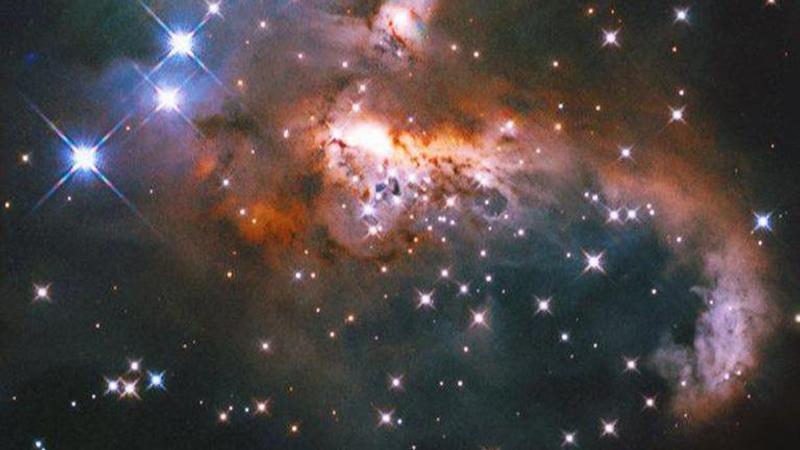Published 19:53 IST, November 11th 2021
NASA shares stunning image of 'Snowman Nebula' taken by Hubble Telescope; See pic
NASA has shared another Hubble image of a glittering nebula that resembles a 'snowman' hovering in space, 6,000 light-years away from Earth.

Despite the Hubble telescope being inactive for the past few days, NASA has kept its legacy alive by sharing marvellous images snapped from various corners of the universe. Currently, on a Nebula November run, NASA has shared another image of a glittering nebula that resembles a 'snowman' hovering in space. According to the agency, this new image depicts an emission nebula as the clouds of dust here emit their own light after drawing energy from nearby stars.
"It’s a space snowman! This newly released Hubble image of the Snowman Nebula is an example of an emission nebula, which is a cloud of gas that’s become so charged by the energy of nearby massive stars that it glows with its own light (sic)", said Hubble in a tweet.
A 'snowman' 6,000 light-years away
Residing in the constellation Puppis in the southern sky, the Snowman nebula is about 6,000 light-years away from Earth, revealed NASA in its statement. This class of nebulae is diffused clouds of gas that have become so charged by the energy of nearby massive stars that they glow with their own light. The agency explained that the radiations emerging from such stars strip electrons from the nebula’s hydrogen atoms in a process called ionisation. It is this process of ionisation that makes the nebula emit energy in the form of light and glow.
"From a telescope on Earth, the Snowman looks a bit like a dual-lobed ball of gas, but this Hubble Space Telescope image captures the details of sweeping curves of bright gas and dark knots of dust in a small section of the nebula", NASA said in its statement. This snowman in the image, also called Sharpless 2-302, was captured as part of a survey of massive- and intermediate-size “protostars,” or newly forming stars. The astronomers were able to capture it using the infrared sensitivity of Hubble’s Wide Field Camera 3 to look for hydrogen ionized by ultraviolet light from the protostars, jets from the stars, and other features.
Meanwhile, more images of breathtaking nebulae are awaited as the Nebula November month isn't over yet. Yesterday NASA had released another image of a disintegrating Wolf-Rayet star WR 124 star in a brilliant Hubble image. Take a look.
Image: Twitter/@NASAHubble
Updated 19:53 IST, November 11th 2021



